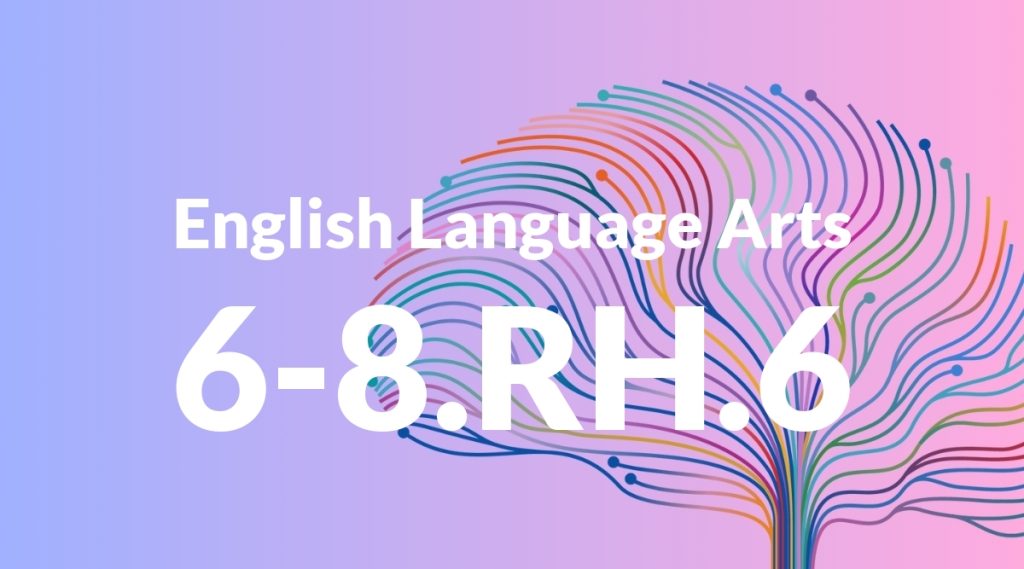Standard: 6-8.RH.6 – Identify aspects of a text that reveal an author’s point of view or purpose (e.g., loaded language, inclusion or avoidance of particular facts).
Grade level: Grade 6-8
Subject: English Language Arts
Domain: History/Social Studies
Teacher Overview
This standard focuses on helping students identify the author’s point of view or purpose in a text. Understanding this is crucial as it allows students to critically engage with texts and discern biases or underlying messages, which is an essential skill in both academic and real-world contexts. Students should have a solid understanding of text structures, main ideas, and supporting details before tackling this standard. They should also be familiar with different writing purposes and genres.
Mastering this standard will enable students to critically analyze texts, discern underlying biases, and better understand how an author’s perspective shapes the information presented. This skill will be foundational for more advanced literary and informational text analysis.
Common Misconception 1
One common misconception is that an author’s point of view is always directly stated. This is incorrect because authors often imply their perspective through subtle cues like word choice, tone, and the facts they choose to include or omit.
Intervention 1
To address this misconception, provide students with guided practice in identifying implicit clues in various texts. Use think-aloud strategies to model how to infer the author’s point of view.
Common Misconception 2
Another misconception is that identifying an author’s point of view is only relevant in opinion pieces. This is not true, as all texts, including informational and historical documents, can reflect an author’s perspective.
Intervention 2
Use a variety of text types in lessons and highlight how the author’s point of view can influence the presentation of information in each type. Encourage students to practice identifying point of view across different genres.
Prerequisite Knowledge
Students should understand the basic elements of a text, such as main idea, supporting details, and context. They should also be familiar with different genres and purposes of writing.
Subsequent Knowledge
After mastering this standard, students will be able to critically analyze more complex texts, identify subtle biases, and understand how an author’s perspective influences the interpretation of information.
Instructional Activities
- Analyze a news article for biased language and missing information.
- Compare two historical accounts of the same event to identify differing perspectives.
- Evaluate an advertisement for persuasive techniques and underlying messages.
- Write a reflection on how an author’s background might influence their writing.




